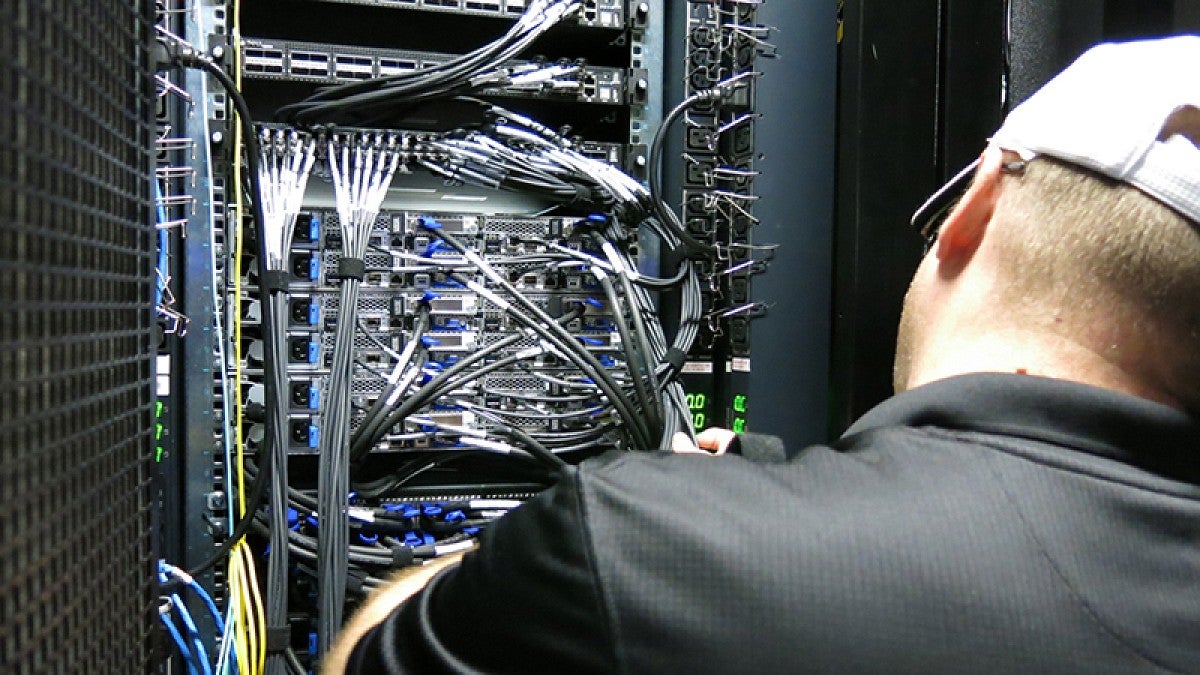A new core research facility launching this week will boost the UO’s research computing resources across the spectrum of disciplines and keep up with the needs of data-intensive studies.
The new High Performance Computing Research Core Facility will join a suite of facilities administered through the Office of the Vice President for Research and Innovation. The new core facility will meet the expanding needs of existing researchers as well as members of the new Phil and Penny Knight Campus for Accelerating Scientific Impact.
It will also be a key educational resource for students and provide a gateway for collaboration between UO researchers and those in the rest of Oregon and the world.
“Just as we’re improving buildings on campus, we’re improving our cyberspaces,” said Bill Cresko, a professor in the Department of Biology and UO’s associate vice president for research. “The high-performance computing facility is designed to be sustainable and will expand and grow and continue to be a resource for our students and faculty engaged in all kinds of research and scholarship.”
The new facility is being built around a nearly $2 million supercomputing cluster with extensive computing power and high-quality data storage to handle most of the current needs of researchers on campus. The core facility will create opportunities for researchers to apply for new kinds of research grants, encourage new collaborations with researchers at other institutions and open up new learning opportunities for students, Cresko said.
In a memo to the research community, David Conover, UO vice president for research and innovation, outlined the opportunities created by the new facility and introduced the new director, Charles “Nick” Maggio. Maggio, who joins the UO in December, has extensive experience establishing and managing similar high-performance core facilities at Tulane University and Washington State University.
He and Joe Sventek, head of the UO’s Department of Computer and Information Science and chair of the faculty advisory committee of the new facility, will give a presentation for the UO research community at 4 p.m. Friday, Oct. 28, in the Erb Memorial Union Redwood Auditorium. Sventek will review the steps taken so far to establish the core, and Maggio will present his vision for how high-performance computing can support research.
The meeting will be followed by a reception. An additional meeting and two drop-in sessions will be held in December.
Users will access the facility from their own desktop computers through the High Performance Computing website. The core facility will eventually replace the UO’s Applied Computational Instrument for Scientific Synthesis system, known as ACISS, which was funded through a major instrumentation grant from the National Science Foundation awarded under the American Recovery and Reinvestment Act of 2009.
A committee of key faculty and staff worked during the 2015-16 academic year to develop the facility, which was designed to grow to meet future internal and external needs. After considering bids from Dell, HP, Cray and IBM, the university selected Dell as the vendor. The new supercomputer will have approximately 10 times more computing capabilities than existing system.
The servers for the new facility are housed in the Allen Hall Data Center in the basement of the building. Technicians installed the equipment late last month and have been testing the facility to assure that it will meet the varied needs of researchers across campus.
The new supercomputer is expected to be up and running by the winter term 2017, and the new core facility will be fully functional soon after.


